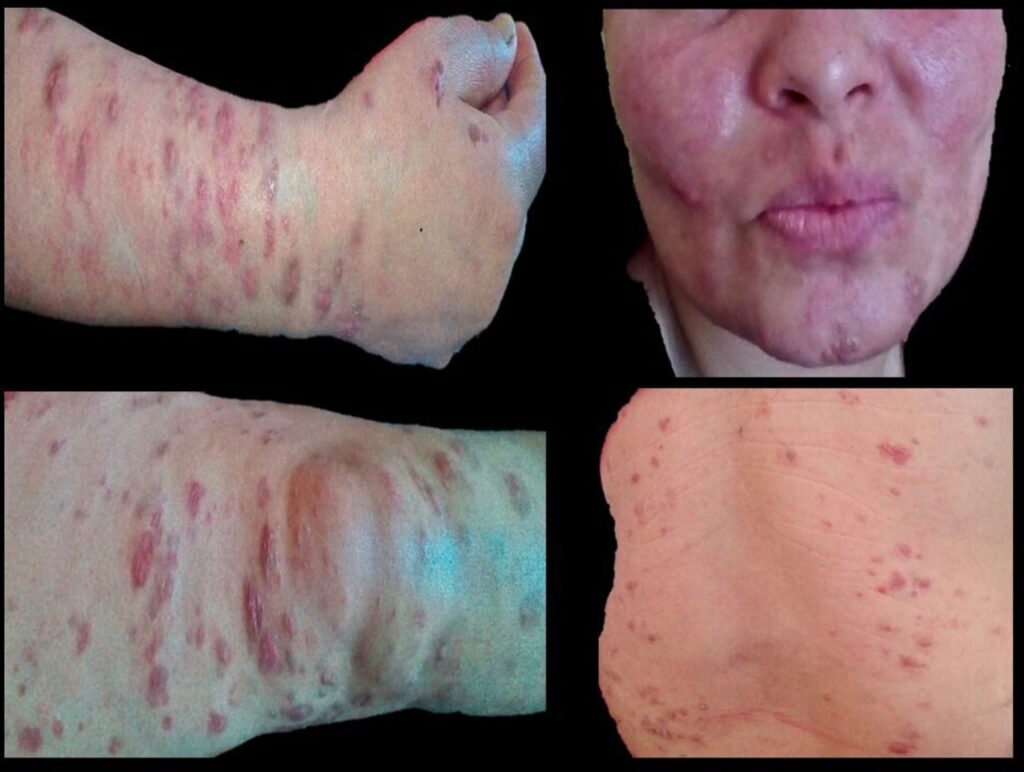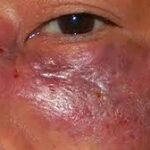Multibacillary (MB) leprosy is a severe form of Hansen’s disease caused by Mycobacterium leprae, a slow-growing bacterium that primarily affects the skin, peripheral nerves, and mucous membranes. MB leprosy is characterized by a high bacterial load, extensive skin lesions, and significant nerve damage, leading to sensory loss and disability if left untreated.

According to the World Health Organization (WHO) classification, leprosy is divided into:
- Paucibacillary (PB) Leprosy – Five or fewer skin lesions with no detectable bacilli.
- Multibacillary (MB) Leprosy – More than five skin lesions, with bacilli present in smears.
Causes and Transmission
Multibacillary leprosy is caused by the Mycobacterium leprae bacterium, which spreads through:
- Prolonged close contact with untreated patients
- Inhalation of infectious droplets from nasal secretions
- Direct skin contact with infected wounds (rare)
Despite these transmission routes, leprosy is not highly contagious, and 95% of people have natural immunity due to their genetic resistance.
Symptoms of Multibacillary Leprosy
MB leprosy presents with widespread skin and nerve involvement, including:
1. Skin Lesions
- Multiple hypopigmented or erythematous patches
- Thickened, infiltrated plaques or nodules
- Loss of sensation in affected areas
2. Nerve Damage
- Thickened peripheral nerves (commonly the ulnar, median, and peroneal nerves)
- Numbness or tingling in extremities
- Loss of motor function leading to deformities (e.g., claw hand, foot drop)
3. Other Symptoms
- Facial involvement (leonine facies) due to thickened skin
- Eye complications such as lagophthalmos and corneal ulcers
- Nasal congestion, nosebleeds, and septal perforation in advanced cases
Diagnosis of Multibacillary Leprosy
1. Clinical Examination
- Identification of multiple skin lesions
- Thickened nerves with sensory or motor loss
- Absence of pain or temperature sensation in affected areas
2. Laboratory Tests
- Skin Smear Test: Ziehl-Neelsen staining reveals acid-fast bacilli (AFB).
- Skin Biopsy: Confirms the presence of Mycobacterium leprae within tissue.
- Lepromin Test: Negative in MB leprosy due to poor cell-mediated immunity.
- PCR (Polymerase Chain Reaction): Detects M. leprae DNA for precise identification.
Treatment of Multibacillary Leprosy
Multidrug Therapy (MDT)
The World Health Organization (WHO) recommends MDT for 12 months to eliminate M. leprae and prevent drug resistance:
- Rifampicin (600 mg, once monthly) – Kills bacteria rapidly.
- Clofazimine (300 mg once monthly, 50 mg daily) – Reduces skin inflammation.
- Dapsone (100 mg daily) – Inhibits bacterial growth.
Supportive Treatment
- Corticosteroids (prednisolone) for nerve inflammation.
- Physiotherapy and occupational therapy to prevent deformities.
- Reconstructive surgery for nerve-damaged limbs.
Complications of Untreated MB Leprosy
If left untreated, MB leprosy leads to severe disabilities, including:
- Claw hand deformity due to nerve damage.
- Foot drop caused by peroneal nerve impairment.
- Blindness from corneal involvement.
- Permanent disfigurement of the nose and face.
Prevention and Control
1. Early Diagnosis and Treatment
- Regular screening of household contacts of leprosy patients.
- Timely initiation of MDT to reduce bacterial transmission.
2. Vaccination
- BCG (Bacillus Calmette-Guérin) vaccine provides partial protection against leprosy.
- New experimental vaccines are under development to enhance immunity.
3. Hygiene and Personal Protection
- Avoid prolonged contact with untreated individuals.
- Maintain proper hand hygiene and respiratory precautions in endemic regions.
Multibacillary leprosy is a serious but treatable disease, requiring early detection and multidrug therapy to prevent disabilities. With ongoing research in vaccine development and public health interventions, global efforts aim to eliminate leprosy as a public health concern.

